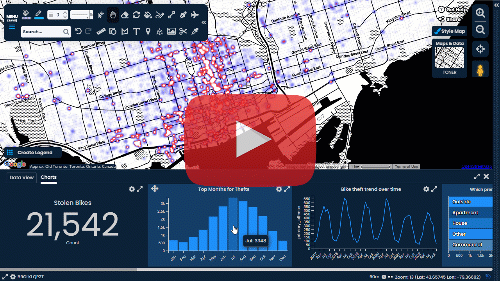Straight vs Curve : Understanding Distances
Today we rolled out some fixes to the site as well as a couple little side simple tools utilizing Scribble Maps. The first is a distance calculator and the other is an area calculator. So we thought we would take a little bit of time and explain some important considerations when drawing lines on maps over great distances. Particularly what is the difference between a straight line, which is a Rhumb line on Google Maps, and a curved line.
There is a common misconception that if you were to walk in one direction without wavering and then drew a line of all the places you stopped it would appear as a curve on a map. While it is true you would actually walk in a curve, on a Google Map which uses what is called a Mercator projection, the line would actually be straight. This is because the projection Google uses stretches the latitude (y-axis) to make travelling in a straight line appear as a straight line on a map.
If you're unfamiliar with this, it might be a little mind bending. The important thing to remember is that when working with a map like Google a straight line is associated with moving in a straight line.
So now, to make every more confusing, let's talk about flight lines also known as great circle lines.
At first glance one might actually assume something that is incorrect and that is if you were to walk in a straight line you would actually follow this curve. However, this is wrong. As we established before, walking in a straight line actually appears as a straight line on a Google Map. So what is this?
The quickest route between two points for something like an airplane on a globe is not a straight line and by straight I mean keeping the same bearing. To save time and distance (which is important for jet fuel) the planes travel on a curve which actually takes less time. I will not go into this in this post, but if you're interested in why you can look up information on the "great circle."
So this bring us to the rub, when calculating the distance between two points, what should you use? The answer is usually a straight line unless you want the shortest distance between two points in the case of flight.
This is important because there are tools out there that utilize great circle curves to estimate the distance between two points and this is not actually accurate if you're planning to walk or move while maintaining the same bearing.
There is a common misconception that if you were to walk in one direction without wavering and then drew a line of all the places you stopped it would appear as a curve on a map. While it is true you would actually walk in a curve, on a Google Map which uses what is called a Mercator projection, the line would actually be straight. This is because the projection Google uses stretches the latitude (y-axis) to make travelling in a straight line appear as a straight line on a map.
Travelling in one direction on a globe
On a Google Map
If you're unfamiliar with this, it might be a little mind bending. The important thing to remember is that when working with a map like Google a straight line is associated with moving in a straight line.
So now, to make every more confusing, let's talk about flight lines also known as great circle lines.
At first glance one might actually assume something that is incorrect and that is if you were to walk in a straight line you would actually follow this curve. However, this is wrong. As we established before, walking in a straight line actually appears as a straight line on a Google Map. So what is this?
The quickest route between two points for something like an airplane on a globe is not a straight line and by straight I mean keeping the same bearing. To save time and distance (which is important for jet fuel) the planes travel on a curve which actually takes less time. I will not go into this in this post, but if you're interested in why you can look up information on the "great circle."
So this bring us to the rub, when calculating the distance between two points, what should you use? The answer is usually a straight line unless you want the shortest distance between two points in the case of flight.
This is important because there are tools out there that utilize great circle curves to estimate the distance between two points and this is not actually accurate if you're planning to walk or move while maintaining the same bearing.



Comments
Post a Comment
Comments are moderated, thanks for your patience.